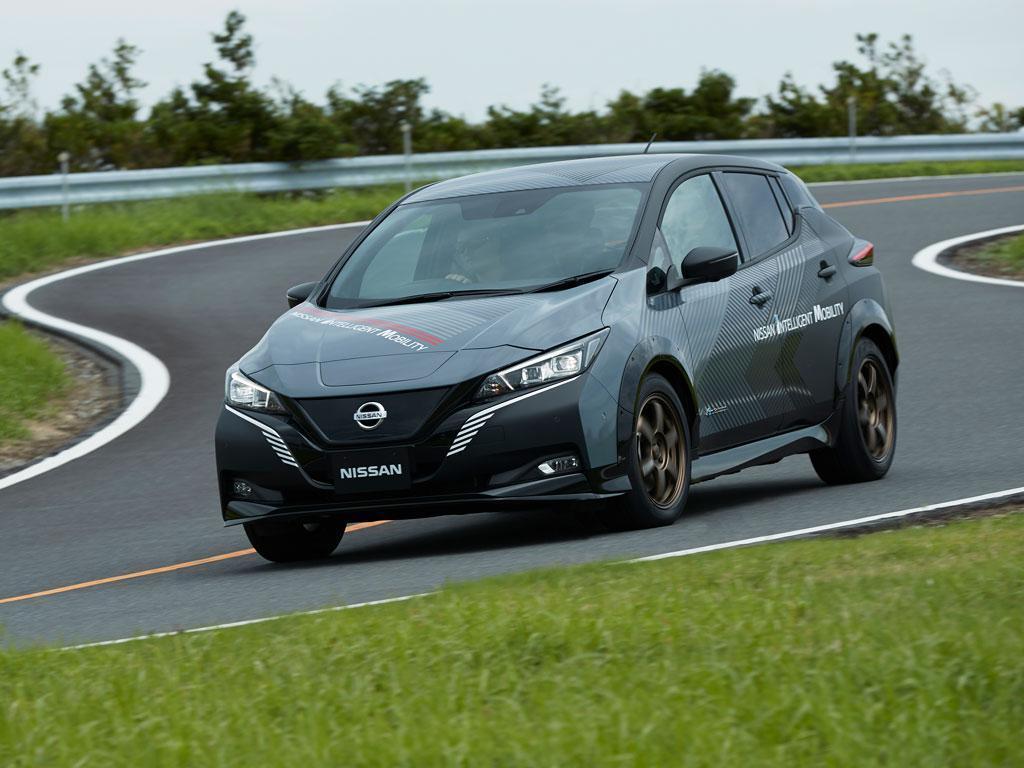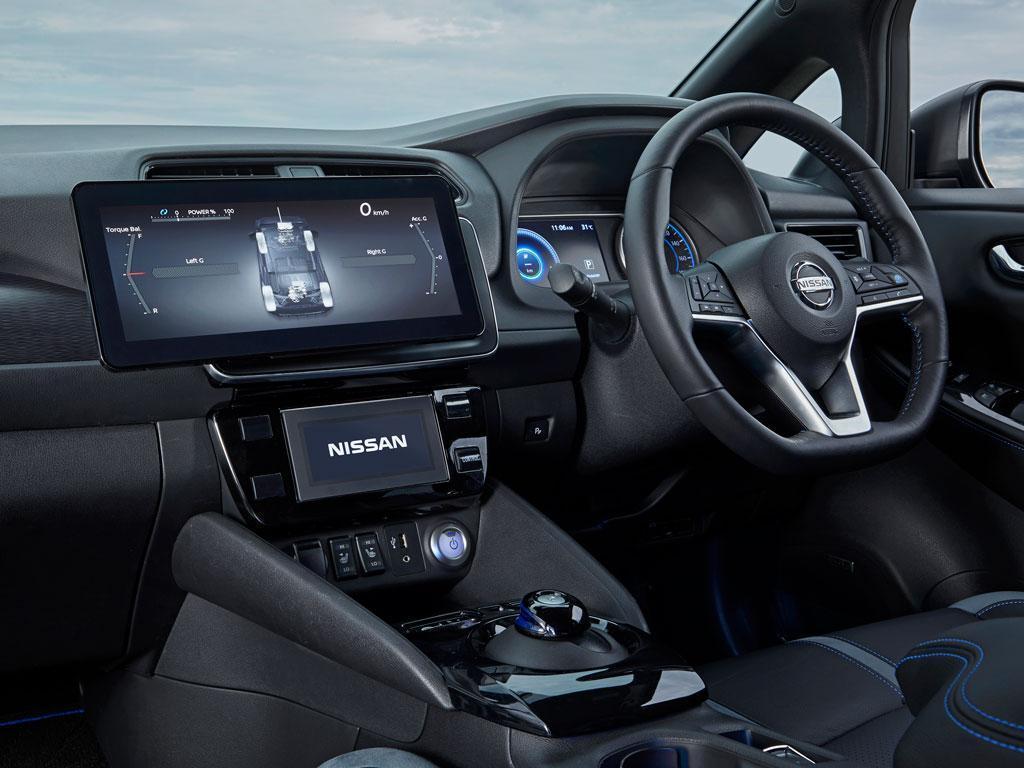Ghost of GT-R in Nissan's new e-4ORCE tech
Firm uses ATTESA E-TS to inform its new twin-motor all-wheel-control system

It’s a mark of just how far ahead of its time the R35 GT-R was when it landed in 2007 that it’s still influencing Nissan's future lineup over a decade later. Specifically it's the super-coupe’s all-wheel drive system - and the many lessons learned in perfecting it - which has led to the development of new EV driveline hardware called e-4ORCE. Nissan says that the latest tech can send torque instantly to all four wheels to provide “balanced, predictable power and handling on par with many premium sports cars”. The brand’s demonstrated the system in a modified Nissan Leaf development car at Las Vegas’s CES.
We'll resist the temptation to draw definitive links between Godzilla and a family-sized EV, but the supplied images do seem to hint at a newfound appetite for corner-taking. And it must be said, it's a characteristic that the much quicker and more expensive Porsche Taycan proved comes quite naturally to EVs when they’re equipped with sophisticated torque-distributing hardware. As Dan found out in our recent video, such technology makes for exceptional car control.

Nissan’s system actually goes one step further than Porsche’s, because along with the benefits to traction and on-throttle agility provided by the instantaneous juggling of torque, e-4ORCE is also said to improve ride. Seriously. Apparently it's thanks to the driveline’s regenerative braking tech, which can shuffle its efforts around the car in order to counter pitch and lean. It’s effective in slow speed traffic, with Nissan claiming to make “stop-and-go traffic less jostling”, as well as on rough surfaces, where “motor control is optimised to maintain ride comfort by minimising irregular movement.” Genius. Potentially at least.
So what does this mean for the future of the driver’s car? Along with sister company Renault, Nissan has long had its eye on producing peppy electric machinery. Renault is set to succeed the Clio RS with a hot Zoe, while Nissan’s best-selling EV (which remains the world’s best-selling electric car) is already capable of hitting 62mph in just 7.3 seconds in top, 217hp form, and it even has an optional Nismo body kit. We’re likely looking at the first tangible example of a sporting Nissan EV’s driveline, then. And plausibly the first step toward an electrified R36 GT-R. If wishing makes it so.


Just a note, ATTESA-ETS goes back to August 1989 with the first 4WD GTR, the R32; so Nissan have now over thirty years' experience of trying to work out the optimal way to divide torque between a car's four wheels dynamically, albeit limited to what was practical with an electronically controlled mechanical diff.
The new wave of pure electric torque manipulation opportunities is really interesting, since it represents new possibilities for how cars can handle and ride; I think Mazda are working along similar lines too.
Electronic aids should not just 'fix' driving errors, they should 'support' driving inputs.
Actually thinking about it when it all goes that way what the hell is the point in a sports car as they will all sound dull, all have the weight in the same place and all have pretty much the same performance, it will just be a slightly different bit of metal to look at.
Actually thinking about it when it all goes that way what the hell is the point in a sports car as they will all sound dull, all have the weight in the same place and all have pretty much the same performance, it will just be a slightly different bit of metal to look at.
I think supercars have got to the "all have the weight in the same place and all have pretty much the same performance" stage already, no? Powerful sports saloons certainly have (they're now even pretty much all four wheel drive).
Gassing Station | General Gassing | Top of Page | What's New | My Stuff



